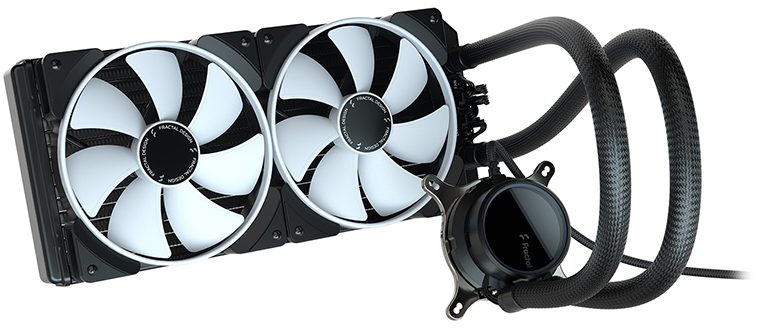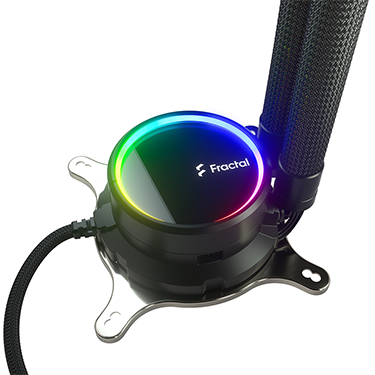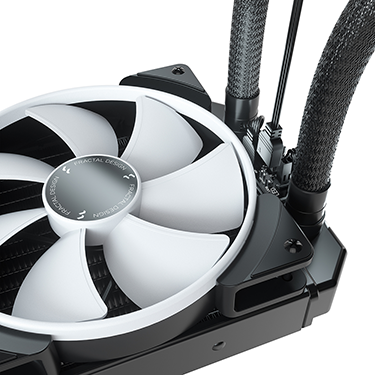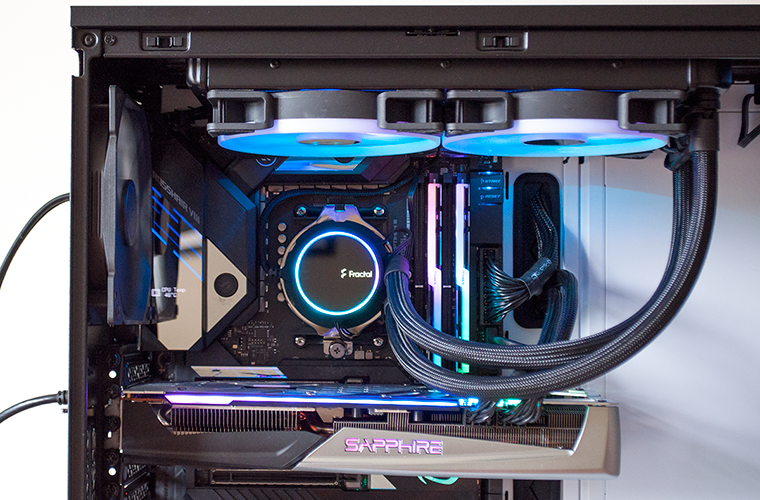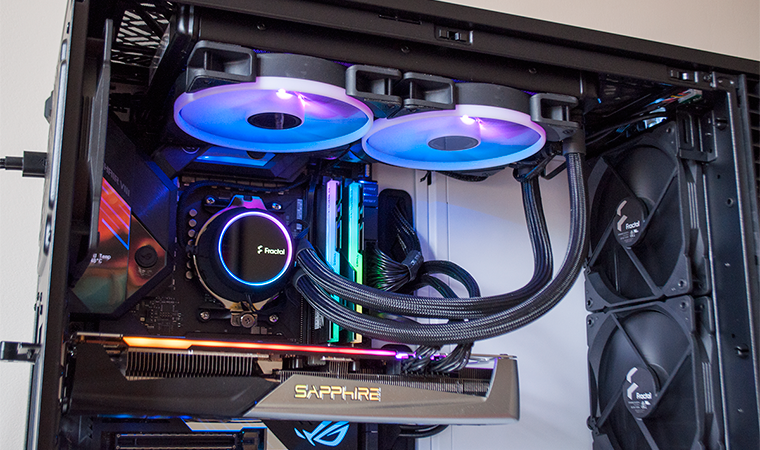Introduction
Testing the latest CPU coolers on our new AMD Ryzen 9 3950X test platform has proven instructive. Noctua's NH-D15 chromax.black, be quiet!'s Pure Rock 2 and Corsair's iCue H115i RGB Pro XT have all been put through the wringer, with varying degrees of success, and today we're turning our attention to Fractal Design's Celsius+ S28 Prisma.
This is a cooler we've been intrigued to handle, as its 2017 predecessor, the Celsius, proved to be one of our favourite all-in-one coolers thanks to a no-nonsense design and low noise levels. Can the 2020 Celsius+ continue in the same vein?
There's certainly more choice this time around. Whereas the original Celsius was presented in one of two sizes (240mm or 360mm), Celsius+ is available in half-a-dozen flavours. Radiator sizes include 240, 360 and a new 280 option, and each form factor is offered with a choice of fans; plain Dynamic or RGB-illuminated Prisma.
Always nice to have the option, however pricing isn't quite as competitive as we'd hoped. The Celsius+ S28 Prisma on the review bench fetches a lofty £190 at retail, and eschewing the extra illumination in favour of the Celsius+ S28 Dynamic only reduces the fee to £160. That's a fair chunk of change, particularly in the face of rivals such as the recently-reviewed Corsair iCue H115i RGB Pro XT, which offers 280mm credentials and is readily available for less than £130.
Value isn't a strong point, however the likeable attributes of the original Celsius are very much present, if not improved, on Celsius+. The sleek pump head certainly looks the part. Fractal's redesigned Asetek pump now tapers out at the bottom, allowing for a slimmer 62mm main body, while the tinted glass lid with backlit logo and addressable RGB ring make it in our estimation one of the most attractive pump designs on the market.
A slight twist of the lid still allows you to switch between 'Auto' and 'PWM' operating modes, with backlit labels briefly appearing behind the glass when making a selection before fading out stylishly. Only NZXT's Z73 does it better with a fully-customisable LCD display, but the advantage of the Fractal is that it requires no cooler-specific software. The RGB illumination is instead intended to be addressed by the motherboard, with Fractal confirming compatibility with Asus Aura, Gigabyte Fusion, MSI Mystic Light, and ASRock Polychrome. We prefer it this way, as we never feel entirely comfortable with a software app governing a component as vital as the CPU cooler.
Simplicity is a key attraction of the Celsius line, and the latest generation maintains that mantra with a redesigned hub at the end of the radiator that now has connectors for both the fans' PWM and aRGB cables. This arrangement makes for a clutter-free installation, with cables neatly hidden within the braided nylon sleeving wrapped around the 400mm rubber tubes. The cooler will work with just one cable - the default four-pin header emanating from the side of the pump - though you will need to attach the optional aRGB cable to the bottom of the pump if you fancy synchronising lighting with the motherboard. Still, this has to be one of the cleanest all-in-one designs available.
Installation really couldn't be any easier - the pump hooks onto the top retention module and clamps to the bottom using just a single thumb screw - and it's frankly nice not to have any SATA or USB cables to contend with. Fan and pump speeds are streamlined, too. Stick to the default 'Auto' mode and the cooler will dynamically adjust performance for "the ideal balance of silence and cooling." Want to do things your own way? Switch to PWM and take control through BIOS.
Plenty to like, though there are a couple of potential niggles. Fractal no longer uses the standard G 1/4in threads of the original Celsius, making expansion much more difficult, but the upside is an articulating 90-degree connection at the pump, making the tubing easier to work with. There's no spare thermal paste, much to our chagrin, and those contemplating whether or not the RGB Prisma fans are worth the £30 premium should note that the plain-black Dynamic fans offer greater maximum airflow (105.9 CFM vs. 103.9) and reduced peak noise (33.7dB vs. 34.1dB). The transparent white tips of the 140mm Prisma fans do look pretty, but the near-20 percent premium is tough to stomach.
As you'd expect from a modern all-in-one, all the latest Intel and AMD sockets are supported (including LGA 1200 and TR4), and Fractal backs the cooler by a five-year warranty as standard. Easy, clutter-free installation, attractive design and the promise of low-noise operation are right up our street. Question is, can the Celsius+ S28 Prisma deliver the level of performance expected from a £190 cooler? Only one way to find out.






